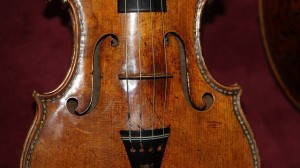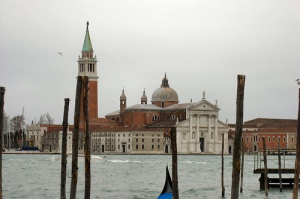Soak it in a pond, soak it in the sea
I caught the Stradivarius exhibition at the Ashmolean on the very last day. Had forgotten all about it until the curator, Jon Whiteley, popped up on the Today programme, talking about how people behave in museums. He told the story of someone who came in to show him a violin, convinced it was a very rare Stradivarius. Even more rare because it was made in Czechoslovakia, which didn’t exist in the 18th century.
So I rushed along to catch the show before it finished. Because who knows when I might need to identify a Strad? It could be me, sitting there in an internet cafe, being offered a violin for 100 pounds by two shady characters who’ve just stolen it from a Korean violinist in Euston station. And, in that highly likely scenario, I need to be able to recognise the quality of the instrument, so I can buy the violin immediately and return it to its owner. But not before unobtrusively taking a photo of the thieves so the police can set detectives on their trail.
So in case it’s you, not me, in that internet cafe, here are some of the things to look out for:
- Asymmetrical f-holes
- A black, worn-away edging around the scroll
- Twiddly bits (base bar and pegs) added by Vuillaume in the 19th century, possibly
- The tiger glow of Cremonese varnish
The exhibition was extraordinary. I loved the workshop and the display where you could see how violins are made. The scroll carving, in particular, was fascinating.
And there was a wonderful example of a letter from Stradivarius, one of only two in existence. Written in a shaky hand, it apologises for the late delivery of a violin to an unknown buyer.
I also enjoyed the language used by Charles Beare, the violin expert, in one of the videos. According to him, no one will ever be able to divine exactly what makes Stradivarius’ instruments so special. “You can soak it in a pond, you can soak it in the sea,” he says. “We’ll never really know.”
What a wonderful expression: ‘soak it in a pond, soak it in the sea’. Scientists have tried all kinds of methods to unpick the magic of Stradivarius, from chemical analysis of wood shavings from instruments under restoration to x-raying violins to establish the precise thickness of the maple and spruce components. Beare’s phrase conjures up an image of immersing a Strad in salt or fresh water – a transgressive and shocking idea – and still being none the wiser.
But maybe there’s another link between Stradivarius and Beare’s inventive expression. Joseph Nagyvary, a biochemist at Texas A&M University, believes that some of the wood that Stradivarius used may have previously been waterlogged, soaked in the water of the Venice lagoon. Apparently woodcutters sent the logs down river from the forested regions of Northern Italy and the Navy took their pick first, so subsequent buyers were looking at wood that may have been lying in water for months.
Soak it in a pond, soak it in the sea, soak it in the Venice lagoon. The truth or just another layer of varnish on the Stradivarius mythology? We’ll probably never know.

